I had the pleasure of meeting Linda Siciliano, the author of Creative Speech Products and creator of the Teddy Talker toolkit, at the ASHA convention last November. Linda is one of the nicest people I’ve spoken to, and she was gracious enough to send me a Teddy Talker starter kit to review! I was super excited about it, not only because it seemed perfect for preschool with the teddy and all of the visuals that my little guys often needed, but because she was so passionate about her product, as well!
The Teddy Talker foundational kit comes with an instructional booklet that gives you a quick introduction of the kit, and also gives a step-by-step example of how to introduce and use Teddy Talker.
It starts with…
1. Introducing the letter/sound relationship
2. Articulating the sound
3. Describing the movement of the sound (The example they gave for /s/ was “Let’s teach Teddy to smile as air tickles down his tongue”)
4. The adult modeling the “construction” of the articulators using the felt pieces (first using the pieces and making the sound in the air, and then secondly placing them on Teddy’s mouth on the board while making the sound again)
5. Guiding the child to teach Teddy him/herself
6. Letting the child teach Teddy him/herself
7. Review the letter-sound relationship
8. Give concrete feedback (ie describing what the child did to help Teddy learn his sound)
The kit comes with the following materials: Teddy Talker board, puppet tongue, felt mouth pieces, cues, speech bubbles, letters, carrying tote, and instructional manual.
Mouth Pieces:
Visual cues are helpful for everyone, but especially our kiddos with delays. Teddy Talker comes with mouth visuals for every phoneme, and the instruction manual that comes with the kit includes a chart of which pieces are used for which sound(s). You manipulate these to show the positioning of your lips and teeth for each phoneme, and have the child manipulate these on the Teddy board, too, to “teach” Teddy how to make the sounds.
Some of the pieces are whole pieces while some sounds are separate with top/bottom lips, as the tops and bottoms are used for several different sounds. I sometimes had a hard time remembering exactly which pieces were paired with each phoneme, without having the book on hand. However, I just put scotch tape on the backs of the pieces, went through the chart, and wrote down all the phonemes that corresponded to each piece– problem solved!
I also love the additional “breath” visual, as it helps distinguish between /p, b/ sounds vs /m/, for example, where the lip positions are the same for all 3 sounds.
Bowties:
Oh how I love bowties!
The green and red bowties are both fun AND functional visuals for the concept of voiced/voiceless sounds! The green represents voiced consonants, while red represents turning your voice “off” to produce a voiceless consonant.
I’ve had several kids on my caseload over the years who couldn’t produce voiceless consonants like /p, t, k/, but could produce the voiced cognates of these sounds. When this is the case, I typically would have them first start with the voiced cognate, and then tell them to turn their voice off and whisper it, so that they would produce the voiceless phoneme. I love having the red/green visuals of the bowtie right at the throat area as a visual of what you’re supposed to do with your voice. Great visual for a sometimes tricky concept!
Graphemes:
The preschool teachers at the school I worked at always did a great job of giving the kids a lot of exposure to letters and letter sounds. With the links between speech sound disorders and potential early literacy delays, having a visual of the corresponding grapheme is great for additional exposure while you’re teaching speech sounds! The kit comes with a speech bubble on which to place the phoneme you’re teaching, and the speech bubble then goes on the Teddy Talker board.
Tongue Puppet:
While the felt pieces allow you to manipulate the lips/teeth combinations, the tongue puppet allows you to have a visual/kinesthetic cue of what the tongue does inside of the mouth for each phoneme. This component was really helpful at the preschool level for showing the difference between /k, g/ and /t,d/.
Mouth Position Rhyme Cards:
I just love these rhyme cards! The depictions of articulator placements are clear and easy to understand for both parent and child, while they’re also visually appealing!
The front of the cards depict oral placement for the sound, paired with the grapheme, while the back has a short rhyme about the sound! These would be great for parents to use in a home practice program. The digital version of the mouth pieces, rhyme cards, and grapheme cards are available on the Creative Speech Products website, too, which makes using these in a home program a piece of cake!
Applications to Therapy:
Whole Group: Although I didn’t run any whole group times at my school, I definitely see Teddy Talker as a great tool to use if you are doing an in-class whole group literacy lesson! Most preschool classrooms have a “letter of the week” that they are teaching. I envision starting the lesson by talking about that letter, the sound it makes, and using Teddy Talker as a visual while introducing those concepts and how to make the sound. You could then read a sound-loaded storybook that focuses on that particular sound (Speech Sprouts and Speechy Musings both have lists to help you find some!). I’d follow that up with a hands-on activity related to the book and letter/sound, and end with a quick review of the letter name and sound it makes using the Teddy Talker visuals!
Small Group: If you are a school-based SLP fortunate enough to have a group of kiddos all working on the same sound(s), Teddy Talker is a great tool to use in your therapy sessions! I didn’t use it as frequently with my groups of 3-4 preschoolers, because I only had 15 minutes with them and many times, my groups were mixed with kids working on different targets- I’d have one kiddo who was only working on /k, g/, another working on 2 syllable words from the Kaufman Kit, and another working on s-blends.
However, given additional time (like my 30 minute sessions with only 2 itinerant students at a time), Teddy Talker worked out great. I just felt like when I only had 15 minutes (10 realistically, by the time I hit each classroom and got them out to the pod area and sitting down, and introduced what we were working on), with those very mixed groups, switching out pieces 3 times didn’t feel like an efficient use of our brief time. So, it’s not something I could use all day with every group, but definitely a tool to utilize in parts throughout the day!
Centers/Stations/One-on-One: If you have your groups set up as centers/stations around the room, where they rotate every x amount of minutes and one of those stations is one on one work with you, you could definitely use this kit even with different sounds, as you would only be potentially switching out the mouth pieces once each rotation, rather than every turn like in a traditional artic group.
Final Thoughts:
With a caseload of 65+ and having mostly 15 minute sessions, realistically, I just couldn’t follow every component–namely, guiding the child to teach Teddy and then letting the child teach Teddy him/herself. When working with kids one on one like in private practice or clinic/outpatient setting, this component is a great teaching tool, though. I’ve been using Teddy Talker with one of the kiddos I’m seeing for private therapy this summer and have had him “teaching” Teddy with the felt pieces, too! He loves the hands-on learning involved in this portion! However, when I was using it at school, in order to maximize our time, I was the one who did most of the articulatory placements with the felt pieces (the exception being my itinerant kiddos who would come for 30 minute sessions). I still feel like my students benefited from the visuals this kit provided, though, even if most of them weren’t manipulating the pieces themselves.
As a whole, though, I have LOVED using Teddy Talker! I love all of the visuals and the rhymes that go with them, and that it includes components that are really useful in home programs. Especially at the preschool level, parents typically want to be really involved, so I really appreciate having cards available that provide parents with the same visuals and verbiage that is being used in therapy. I think Teddy Talker would get the most use from private practice/clinic/outpatient therapists, but it definitely still has applications to school-based therapists, especially those doing whole group literacy lessons or those who have their therapy room set up as rotating centers!
You can find all of the Teddy Talker materials on the Creative Speech Products website, along with a video demonstrating use of Teddy here!
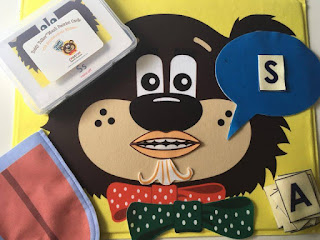
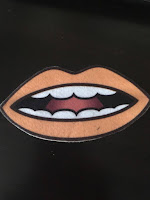
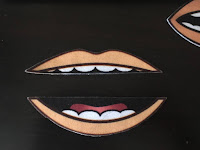
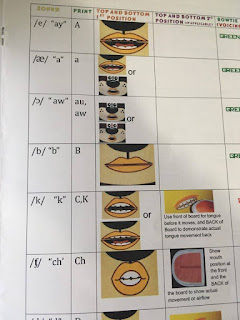
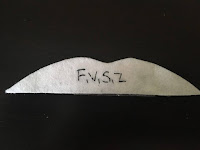

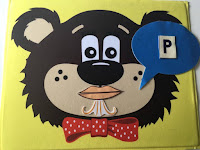



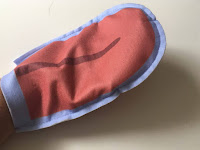


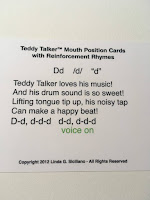

Leave a Reply